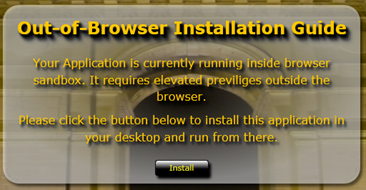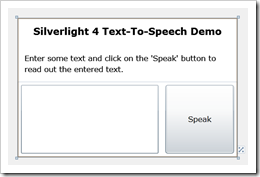MEF is a framework to extend your application and was introduced in .Net Framework 4.0 and Silverlight 4.0. Recently I got a chance to look around the MEF with Silverlight. I found it useful in various scenarios and thus thought to do something with MEF in Silverlight.
In this article I will first discuss little about the MEF framework to give you some basic knowledge on it and then will show you how to create a small HelloMEFWorld console application step-by-step. In the next article I will use it in a Silverlight application & showcase you the feature and functionality. Read through the whole article and use this extender in your application if you need. Don’t forget to share your feedbacks and suggestions as this helps me improve my articles in greater details and present more to you.


 Microsoft has released Silverlight for the Symbian OS, which will allow your Silverlight applications to run in some selected Nokia handsets. Earlier, Silverlight was only available for web on desktop for Windows, Mac operating system. Later Moonlight came out, which is the linux version of Silverlight. Then Microsoft released Silverlight for Windows Phone 7 and this is the time for Symbian platform targeting mobile devices such as Nokia N97, N97 Mini XpressMusic etc.
Microsoft has released Silverlight for the Symbian OS, which will allow your Silverlight applications to run in some selected Nokia handsets. Earlier, Silverlight was only available for web on desktop for Windows, Mac operating system. Later Moonlight came out, which is the linux version of Silverlight. Then Microsoft released Silverlight for Windows Phone 7 and this is the time for Symbian platform targeting mobile devices such as Nokia N97, N97 Mini XpressMusic etc.
 Have you ever heard of Text to Speech engine? “Yes” I think. Yes, it is not a new thing in the Computer World. It was available since Windows 98 (as much as I can recall) but it is completely new in Silverlight. You can now use the Silverlight application to give an API call to the SAPI Engine which will convert the text to voice. Sounds Good? This is achievable using the COM APIs only.
Have you ever heard of Text to Speech engine? “Yes” I think. Yes, it is not a new thing in the Computer World. It was available since Windows 98 (as much as I can recall) but it is completely new in Silverlight. You can now use the Silverlight application to give an API call to the SAPI Engine which will convert the text to voice. Sounds Good? This is achievable using the COM APIs only.